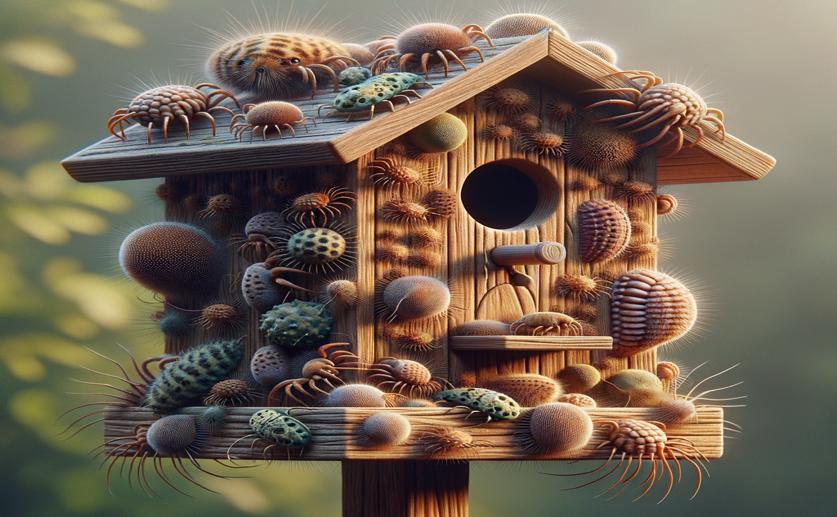
How Bird Nesting Boxes Boost Mite Biodiversity
Jim Crocker
14th June, 2024

Image Source: Natural Science News, 2024
Key Findings
- The study in Bory Tucholskie National Park found that L. orbicularis is the dominant mite species in bird nesting boxes, with over 6,000 specimens
- Ch. nidiphila, a rare mite species previously known only from woodpecker hollows, was also found in the nesting boxes, expanding its known habitat range
- The presence of bird nesting boxes contributes to the biodiversity of mite species in the park, providing important microhabitats for both common and rare species
References
Main Study
1) Bird nesting boxes as a specific artificial microenvironment increasing biodiversity of mites from the suborder Uropodina (Acari: Mesostigmata): a case study of Bory Tucholskie National Park
Published 13th June, 2024
https://doi.org/10.1007/s10493-024-00912-9
Related Studies
2) Communities of Uropodina (Acari: Mesostigmata) in Nest Boxes Inhabited by Dormice (Glis glis and Muscardinus avellanarius) and Differences in Percentages of Nidicoles in Nests of Various Hosts.
3) A review of the ectoparasitic mites (Acari: Dermanyssoidea) associated with birds and their nests in Slovakia, with notes on identification of some species.
4) Unstable microhabitats (merocenoses) as specific habitats of Uropodina mites (Acari: Mesostigmata).



 7th May, 2024 | Jenn Hoskins
7th May, 2024 | Jenn Hoskins